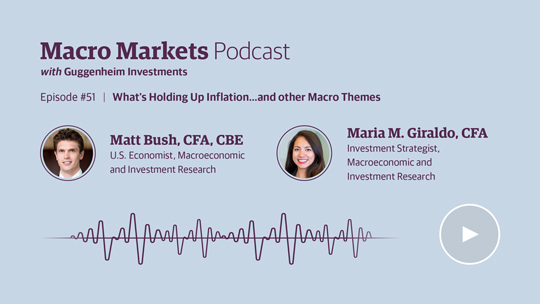/institutional/perspectives/portfolio-strategy/technical-tailwinds-and-prospect-of-a-soft-landing
Portfolio Management Outlook: Technical Tailwinds and the Prospect of a Soft Landing
Managing through an increase in the range of possible economic and market outcomes.
Recent data and policy developments have fallen firmly in the soft-landing camp, and market performance has reflected this shift. Lower inflation and resilient economic growth caused an upside surprise to second quarter real gross domestic product, business investment is getting a boost from fiscal policy initiatives to onshore domestic production, and the housing market is showing signs of adjusting to higher mortgage rates. Fixed income, especially higher beta credits, delivered solid performance in the first half of the year as spreads tightened.
The Federal Reserve (Fed) has embraced the soft-landing narrative for the moment. This stance is supporting risk assets, but the acceleration in economic activity and the easing in financial conditions are a double-edged sword since a stronger economy would lead to resurgent inflationary pressures. We still expect the lagged impact of 525 basis points of rate hikes to precipitate a recession, but a soft landing would signal that the Fed’s inflation fight is not over. The increase in the range of economic outcomes lends some uncertainty to market conditions, but at the very least this backdrop supports higher front-end rates for longer and continued elevated rate volatility. This dynamic is providing attractive, high quality investment opportunities across our strategies.
Our sector teams share a point of view that is remarkably similar across the market—yields are among the highest seen in the past decade or more, and spreads are generally held in check due to the first half decline in new issuance volume in many sectors. Bank loan coupons are 9 percent, the highest since 2001, contributing to a yield that our sector team believes compensates for rising credit risk. Our investment-grade corporate sector team reports that supply technicals and a natural buyer base for 30-year paper should support longer-duration securities. These technicals will also likely provide secondary market tailwinds for RMBS, CMBS, and other asset-backed securities.
The technical tailwinds are a positive dynamic for portfolio performance, but reinvesting high yields into markets with limited supply could also mute the market’s ability to reprice credit risk appropriately. We are seeing early signs of the turning of the credit cycle. Downgrades are outpacing upgrades and defaults are rising for corporate and municipal credits. As we expected, our sector teams are seeing increased dispersion among credits. In this environment, it is crucial to look for trends in leverage and fixed-charge coverage ratios, upcoming maturity schedules, and exposure to labor pressures. For now, credit issues have been idiosyncratic in nature but over time these kinds of issues have the potential to become more pervasive among industries and/or sectors. We are only a few months removed from the mini banking crisis and challenges in that sector or others could appear at any time. In that vein, we are keenly focused on direct and indirect exposure to commercial real estate, a sector that faces severe headwinds and where our team notes that prices have dropped 11 percent year over year, geographic dispersion is significant, and capital availability is challenging, particularly for office properties.
During this period of elevated uncertainty, focusing on diversification, capital preservation, and maintaining portfolio optionality is key. Fortunately, relatively high yields are available on relatively low-risk assets, which gives us confidence that we can continue to find compelling values even as we take a defensive posture on behalf of our clients.
—By Anne Walsh, Steve Brown, Adam Bloch, and Evan Serdensky
Important Notices and Disclosures
This material is distributed or presented for informational or educational purposes only and should not be considered a recommendation of any particular security, strategy or investment product, or as investing advice of any kind. This material is not provided in a fiduciary capacity, may not be relied upon for or in connection with the making of investment decisions, and does not constitute a solicitation of an offer to buy or sell securities. The content contained herein is not intended to be and should not be construed as legal or tax advice and/or a legal opinion. Always consult a financial, tax and/or legal professional regarding your specific situation.
This material contains opinions of the authors, but not necessarily those of Guggenheim Partners, LLC or its subsidiaries. The opinions contained herein are subject to change without notice. Forward-looking statements, estimates, and certain information contained herein are based upon proprietary and non-proprietary research and other sources. Information contained herein has been obtained from sources believed to be reliable but are not assured as to accuracy. Past performance is not indicative of future results. There is neither representation nor warranty as to the current accuracy of, nor liability for, decisions based on such information.
Investing involves risk, including the possible loss of principal. Investments in fixed-income instruments are subject to the possibility that interest rates could rise, causing their values to decline. High yield and unrated debt securities are at a greater risk of default than investment grade bonds and may be less liquid, which may increase volatility. Investors in asset-backed securities, including mortgage-backed securities and collateralized loan obligations (“CLOs”), generally receive payments that are part interest and part return of principal. These payments may vary based on the rate loans are repaid. Some asset-backed securities may have structures that make their reaction to interest rates and other factors difficult to predict, making their prices volatile and they are subject to liquidity and valuation risk. CLOs bear similar risks to investing in loans directly, such as credit, interest rate, counterparty, prepayment, liquidity, and valuation risks. Loans are often below investment grade, may be unrated, and typically offer a fixed or floating interest rate.
Guggenheim Investments represents the following affiliated investment management businesses of Guggenheim Partners, LLC: Guggenheim Partners Investment Management, LLC, Security Investors, LLC, Guggenheim Funds Distributors, LLC, Guggenheim Funds Investment Advisors, LLC, Guggenheim Partners Advisors, LLC, Guggenheim Corporate Funding, LLC, Guggenheim Partners Europe Limited, Guggenheim Partners Japan Limited, GS GAMMA Advisors, LLC, and Guggenheim Partners India Management.
GPIM 58501
VIDEOS AND PODCASTS

Maria Giraldo, Investment Strategist for Guggenheim Investments, joins Asset TV’s Fixed Income Masterclass.

Matt Bush and Maria Giraldo join the Macro Markets podcast to discuss our newly published Quarterly Macro Themes for 1Q 2024.
©
Guggenheim Investments. All rights reserved.
*Assets under management is as of 3.31.2024 and includes leverage of $14.5bn. Guggenheim Investments represents the following affiliated investment management businesses of Guggenheim Partners, LLC: Guggenheim Partners Investment Management, LLC, Security Investors, LLC, Guggenheim Funds Distributors, LLC, Guggenheim Funds Investment Advisors, LLC, Guggenheim Corporate Funding, LLC, Guggenheim Partners Europe Limited, Guggenheim Partners Japan Limited, and GS GAMMA Advisors, LLC.
By choosing an option below, the next time you return to the site, your home page will automatically
be set to this site. You can change your preference at any time.
We have saved your site preference as
Institutional Investors. To change this, update your
preferences.
United States Important Legal Information
By confirming below that you are an Institutional Investor, you will gain access to information on this website (the “Website”) that is intended exclusively for Institutional Investors and, as such, the information should not be relied upon by individual investors. This Website and any product, content, information, tools or services provided or available through the Website (collectively, the “Services”) are provided to Institutional Investors for informational purposes only and do not constitute a recommendation to buy or sell any security or fund interest. Nothing on the Website shall be considered a solicitation for the offering of any investment product or service to any person in any jurisdiction where such solicitation or offering may not lawfully be made. By accessing this Website, you expressly acknowledge and agree that the Website and the Services provided on or through the Website are provided on an as is/as available basis, and except as partnered by law, neither Guggenheim Investments and it parents, subsidiaries and affiliates nor any third party has any responsibility to maintain the website or the Services offered on or through the Website or to supply corrections or updates for the same. You understand that the information provided on this Website is not intended to provide, and should not be relied upon for, tax, legal, accounting or investment advice. You also agree that the terms provided herein with respect to the access and use of the Website are supplemental to and shall not void or modify the Terms of Use in effect for the Website. The information on this Website is solely intended for use by Institutional Investors as defined below: banks, savings and loan associations, insurance companies, and registered investment companies; registered investment advisers; individual investors and other entities with total assets of at least $50 million; governmental entities; employee benefit (retirement) plans, or multiple employee benefit plans offered to employees of the same employer, that in the aggregate have at least 100 participants, but does not include any participant of such plans; member firms or registered person of such a member; or person(s) acting solely on behalf of any such Institutional Investor.
By clicking the "I confirm" information link the user agrees that: “I have read the terms detailed and confirm that I am an Institutional Investor and that I wish to proceed.”